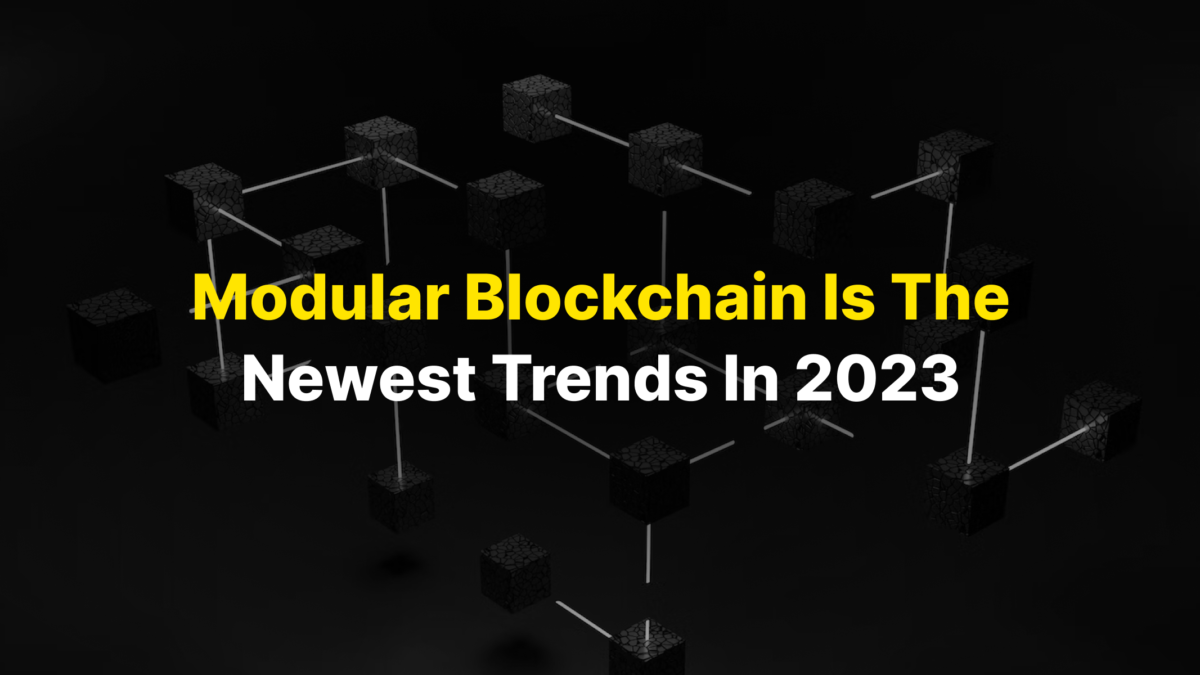In recent times, the talks about Modular Blockchains are becoming more fierce in the crypto ecosystem. Will you believe that Bitcoin’s prolonged transaction verification process and Ethrerum’s high gas fee are some of the reasons why modular blockchains emerged? Let us dive in to find out when this started.
Are Modular Blockchains Key To Scalability?
Nowadays, blockchains achieve scalability through modular execution and data availability layers. But in the past, the leading cryptocurrencies like Ethereum and Bitcoin had a monolithic architecture with poor performance, making it difficult to scale the network. Developing these modular blockchains will require the assistance of a blockchain smart contract development company.
Modular blockchains have considerably more adaptable layouts than monolithic blockchains. This enables miners to access various functionalities that were absent in monolithic architectures. Moreover, they split and shift work across multiple layers to achieve greater efficiency.
Remember Blockchain Trilemma?
The story of monolithic and modular architecture starts with blockchain trilemma. If you don’t know, blockchain trilemma points out that a blockchain can maintain only two of three properties– Security, Decentralization, and Scalability. Among them, scalability is the hardest one to attain. That’s why developers spent time developing blockchain layers, such as The Lightning Network.
With this setup, we can achieve all four functions (execution, consensus, data availability, and settlement) in the single-layer monolithic blockchain itself. However, if you load this in the base layer, it will reduce the performance and throughput of the blockchain. So, as we said earlier, modular blockchains separate tasks among several layers, helping overcome the drawbacks of monolithic chains.
Examination Of Modular Blockchain
Scalability: A modular blockchain allows users to save time by eliminating long verification processes in blockchain networks. Modular chains create fractionalized channels for handling one task in each compartment, reducing network congestion.
Decentralization: Even after splitting into different layers, the modular chains yet assure consensus and security, even during overload times. With the help of social consensus, we can make minute selections regarding transactions, aiding in the growth of the decentralized platform.
Efficiency: A blockchain developer can simply introduce an L2 solution to resolve the blockchain trilemma. For example, the Ethereum blockchain can use ZK rollups to obtain robust security, and it also reduces the gas fee and latency.
Latency is the time taken between submission and confirmation of a transaction. Blockchain smart contracts play the role of the mediator here. A Smart contract development company can develop digital contracts offering low latency.
Is Modular Blockchain “The FUTURE”?
With continuous improvements in the blockchain space, especially for existing systems, Modular blockchains such as Polygon and Cosmos ensures scalability without meddling with the security and decentralization of the network. This is the reason why Solana and other monolithic blockchains are moving forward with modular blockchain development.
We can witness the adoption of a modular system in the Ethereum blockchain when it used Layer-2 and rollups, indicating that popular chains are ready to transit from traditional networks to scalable networks. Now, this is surely the first-successful milestone for modular architecture.


